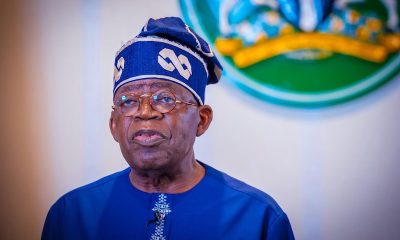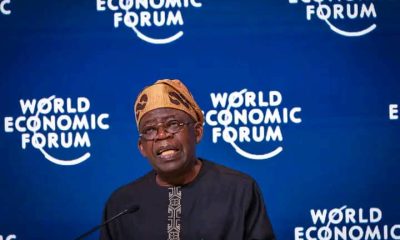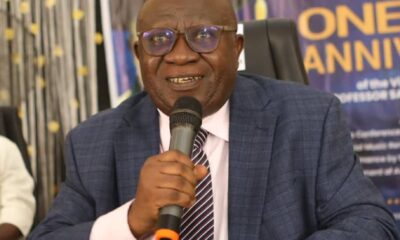Education
Transforming Nigeria’s Education System: Learning From China’s Model

Dr. Abejide B. Olusegun
Education is the backbone of any nation’s development, and the recent decision by the Federal Government of Nigeria to scrap the Junior Secondary School (JSS) and Senior Secondary School (SSS) levels and introduce a compulsory 12-year uninterrupted basic education model marks a significant shift in the country’s education system. This move, which replaces the long-standing 6-3-3-4 system with a 12-4 model, is an ambitious and commendable effort to provide every Nigerian child with uninterrupted learning up to the age of 16 before transitioning to higher education.
The Minister of Education, Dr. Tunji Alausa, has emphasized that this reform aligns Nigeria with international educational standards, reduces dropout rates, and ensures a more structured and uniform curriculum. The reform also aims to integrate vocational and entrepreneurial skills into early education, thus equipping students with relevant knowledge before proceeding to tertiary education or joining the workforce. This decision deserves commendation as it reflects an understanding that the foundation of a strong economy and a thriving society lies in the quality of its education system.
ALSO READ: Koko Illuminates, As Canaan Land Sports Fiesta Kicks Off On Valentine’s Day
However, as commendable as this new policy is, its success will largely depend on effective implementation strategies. The government should take inspiration from countries with highly effective education systems, particularly China, which has consistently ranked among the best in global education performance. The Chinese model of primary and secondary education offers valuable lessons that can guide Nigeria in restructuring its basic education curriculum. Adopting and modifying China’s educational strategies to suit the Nigerian context will ensure that the reform does not only exist in theory but also yields meaningful and lasting results.
Learning from China’s Model of Basic Education
China has built an education system that is rigorous, well-structured, and results-driven. The country’s basic education spans twelve years, much like what Nigeria is now implementing. However, China’s approach focuses on discipline, early specialization, and an intense emphasis on STEM (Science, Technology, Engineering, and Mathematics) subjects, while also incorporating social sciences and humanities to produce well-rounded students.
One of the major strengths of China’s education system is its strict and standardized curriculum across the country. The curriculum is designed to ensure that every child, regardless of their location or economic background, receives the same high-quality education. Nigeria must adopt this approach by enforcing a standardized curriculum that eliminates disparities in educational quality across different states and regions.
Additionally, China’s early emphasis on critical thinking, problem-solving, and innovative learning methods has been key to its success. Nigerian schools must transition from a rote memorization approach to one that encourages analytical skills and independent thinking. Students should be trained to apply knowledge in the real-world rather than simply memorizing facts to pass exams.
Another crucial aspect of China’s success is teacher training and professional development. Chinese educators undergo rigorous training before they can teach in classrooms, ensuring they are well-equipped to impart knowledge effectively. Nigeria must prioritize comprehensive teacher training programs to improve the quality of education at the foundational level. Continuous professional development and performance-based incentives should also be introduced to motivate teachers to remain committed to excellence.
Furthermore, China incorporates technology and digital learning into its education system at an early stage. Nigerian schools must embrace technology-driven education by integrating e-learning platforms, virtual classrooms, and smart educational tools into the curriculum. Equipping students with digital literacy skills from an early age will prepare them for the future job market, where technology plays a crucial role.
Addressing Nigeria’s Structural and Systemic Challenges
For the 12-year uninterrupted education model to succeed, Nigeria must address systemic challenges that have hindered educational progress under the previous 6-3-3-4 system. One of the biggest flaws of the 6-3-3-4 system was its failure to ensure a seamless transition from one stage to another. This has resulted in students graduating from secondary school as early as 15 years old but being unable to proceed to higher education until they reach 18, as seen in the case of my daughter. Meanwhile, in developed countries, highly talented students have been known to enter university as young as 12. This inefficiency must be resolved by aligning the new system with a well-defined transition mechanism that caters to both academically gifted students and those who need additional support.
A significant aspect that must be addressed is the economic burden on parents and families. Despite Nigeria’s claim to provide free basic education, financial barriers such as hidden school fees, the cost of learning materials, and inadequate infrastructure have prevented many children from completing their studies. The government must ensure that the 12-year basic education model truly remains free and accessible, particularly for children from disadvantaged backgrounds.
Additionally, the implementation of this new system will require a major investment in infrastructure. Many schools in Nigeria lack basic amenities such as proper classrooms, libraries, laboratories, and internet connectivity. China’s success in education can be attributed partly to its heavy investment in infrastructure and resources for public schools. Nigeria must follow suit by improving school facilities and ensuring that every child, irrespective of their socioeconomic status, learns in a conducive environment.
The issue of regional educational disparities must also be tackled. The current centralized education system has proven ineffective in addressing the unique challenges faced by different regions in Nigeria. To fully implement this reform, the government must restructure the country into regional education zones, similar to the regional system Nigeria had before the military coup of 1966. A decentralized education model would empower states and local governments to make decisions based on their unique educational needs while still adhering to a national standard.
Integrating Vocational and Entrepreneurial Skills into Basic Education
A major highlight of China’s basic education system is the incorporation of vocational and entrepreneurial training, ensuring that students are well-prepared for both higher education and employment. Nigeria must take advantage of this model by making skill acquisition an integral part of the curriculum. Many secondary school graduates in Nigeria struggle with unemployment due to a lack of practical skills. A well-designed vocational education program will provide students with the necessary skills to either enter the workforce immediately or continue their education at a higher level.
China has successfully created a dual education system where students can choose between an academic track and a vocational track based on their strengths and interests. Nigeria should implement a similar system that allows students who may not be inclined to traditional academic routes to excel in technical and entrepreneurial fields. By doing so, Nigeria can produce a workforce that is skilled, innovative, and ready to drive economic growth.
Government’s Role in Ensuring the Success of This Reform
For this ambitious educational reform to yield positive results, the Nigerian government must adopt a multi-stakeholder approach, involving parents, teachers, policymakers, and industry leaders. There must be strong public-private partnerships to bridge the funding gaps and enhance the quality of education.
Additionally, the government must enforce strict monitoring and evaluation mechanisms to ensure that schools comply with the new curriculum standards. China’s education model thrives on accountability, with regular assessments and performance reviews for both students and teachers. Nigeria should establish similar structures to track progress, identify challenges, and make necessary adjustments.
Another crucial step is the involvement of international organizations and educational experts. Collaborating with global institutions such as UNESCO and the World Bank will provide Nigeria with the technical expertise, funding, and policy guidance needed to successfully implement this reform.
Conclusion: A Pathway to a Brighter Future for Nigeria’s Education System
The decision to replace the 6-3-3-4 system with a 12-year uninterrupted education model is a positive step. However, for this reform to be successful, Nigeria must take lessons from China’s highly efficient education system. Standardizing the curriculum, improving teacher training, leveraging technology, and integrating vocational education will help create a well-rounded and globally competitive workforce.
Moreover, addressing structural challenges such as funding, infrastructure, and regional disparities is critical to ensuring that this transformation does not remain a policy on paper but is implemented effectively across the country. The restructuring of Nigeria into regional education zones, as was the case before 1966, will allow for better governance and tailored solutions to local challenges.
If properly executed, this reform has the potential to unlock Nigeria’s educational potential, equipping future generations with the knowledge and skills required to thrive in an increasingly competitive world. By learning from China and making strategic investments in education, Nigeria can pave the way for sustainable development, economic growth, and global competitiveness.





























